Agriculture Reference
In-Depth Information
Table 19.3
Wheat exports by the fi ve major exporters and other foreign exporters during the period 1987-2005.
Total Rest of
World
Australia
Canada
Argentina
EU-25
a
US
Million
Tonnes
Million
Tonnes
Million
Tonnes
Million
Tonnes
Million
Tonnes
Million
Tonnes
Year
%
%
%
%
%
%
1987
8.83
9.85
21.08
23.52
3.32
3.70
14.73
16.44
13.29
68.35
38.74
43.22
1988
10.74
11.30
11.82
12.44
3.84
4.03
23.03
24.22
13.96
66.66
36.62
38.51
1989
10.41
10.78
16.33
16.88
5.86
6.07
23.67
24.50
11.31
69.90
32.42
33.53
1990
11.32
11.76
20.93
21.72
5.39
5.58
22.55
23.41
11.79
74.74
28.03
29.10
1991
6.46
7.10
22.27
24.50
5.26
5.77
22.57
24.82
11.71
75.07
31.74
34.89
1992
8.95
9.85
17.91
19.71
5.32
5.85
22.49
24.74
11.86
73.22
33.48
36.85
1993
13.22
13.72
18.42
19.11
4.83
5.01
20.15
20.90
11.17
70.30
32.22
33.42
1994
6.47
6.34
21.23
20.85
7.45
7.32
20.73
20.36
11.18
65.87
32.93
32.34
1995
13.42
13.31
16.47
16.33
4.52
4.49
16.61
16.47
14.94
65.43
34.05
33.78
1996
17.98
19.22
18.24
19.52
9.54
10.21
18.03
19.27
10.71
79.67
25.50
27.27
1997
14.69
15.35
19.28
20.14
10.68
11.16
15.65
16.36
12.57
76.10
27.12
28.31
1998
16.26
16.47
14.52
14.70
8.45
8.57
17.49
17.72
15.18
72.84
28.10
28.47
1999
15.63
17.86
16.79
19.16
10.15
11.59
16.98
19.38
14.54
84.59
25.90
29.59
2000
15.42
15.92
16.77
17.31
10.92
11.27
16.27
16.79
12.63
74.33
28.00
28.91
2001
15.12
16.41
14.99
16.28
9.28
10.07
13.11
14.24
23.35
82.34
24.13
26.18
2002
8.42
9.15
8.66
9.42
6.22
6.75
18.36
19.95
37.04
85.49
21.30
23.14
2003
16.50
18.05
14.44
15.79
8.60
9.42
10.00
10.94
21.64
77.84
28.82
31.52
2004
13.31
14.75
13.50
14.97
10.68
11.84
12.96
14.37
23.46
81.93
26.10
28.93
2005
14.95
16.49
14.51
16.00
6.35
7.00
13.15
14.51
26.38
83.10
24.67
27.22
Note:
Aggregate of differing local marketing years including Australia (Oct./Sept.), Canada (Aug./July), Argentina (Dec./
Nov.), and EC-25 (July/June).
a
Includes intra-EU trade.
discussions required to include nongrade speci-
fi cations in a wheat contract are all part of
price discovery negotiations in a buy-and-sell
transaction.
Single-desk trading allows one entity to control
the price, quantity, and quality of a commodity
exported from a country. The single-desk organi-
zations, the Canadian Wheat Board (CWB) and
the Australian Wheat Board (AWB), meet market
requirements by controlling wheat from the fi eld
to the customer. By adjusting their defi ned quality
parameters within a class and the quantity of
wheat available for export to a respective country,
these organizations ensure a uniform supply with
consistent quality. Some argue that a single-desk
trading structure provides a competitive advan-
tage in export markets. For example, the CWB
includes protein content and cultivar in their
grading and classifi cation standards, and the AWB
includes protein content, falling number, culti-
var, and color specifi cations. Both the AWB and
CWB can control the price, quantity, and cultivar
of wheat available to the export market, and unlike
the US marketing system, these boards include
quality measures in their grading standards. Some
argue that single-desk boards have an advantage
when they protect certain customers by withhold-
ing supply from the open market. These types of
transactions and their lack of transparency to the
rest of the marketplace are often criticized.
In 1916, the US Congress passed the US Grain
Standards Act (USGSA), which established
quality standards for grain traded in the US.
Wheat standards were fi rst implemented in 1917
and have been revised numerous times. In May
2006, the US Federal Grain Inspection Service
(FGIS) implemented a program to test wet gluten
content in hard red winter and hard red spring
wheat classes. This was an example of a change
in the US marketing system that helped meet
buyers' increased desire to include functional
properties of wheat in contract specifi cations.





